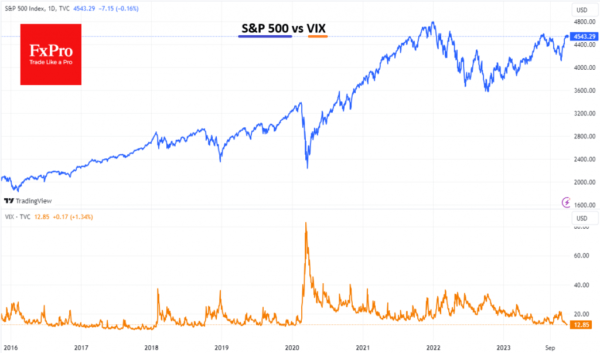Financial market volatility has plunged to its lowest level in almost four years, according to the VIX index. This so-called “fear index” fell to 12.45 on Friday, the lowest level since January 2020. Such low levels could be both a sign of the market entering a smooth bullish trend or a lull before a sharp decline.
Low VIX values indicate weak expected market volatility in the coming months.
Sometimes, such market signals should be perceived as overconfidence by investors. And then, the calm is followed by a storm wave, knocking down everything in its path. The peak of overconfidence is usually followed by bitter disappointment in the form of a painful sell-off in stocks.
This can be a period of quiet growth in stocks. And while bears should be prepared for a reversal in stocks, they should not be in a hurry to make a quick bet on it because a rally in stocks can take an indefinitely long time while the VIX is at such low levels.
The VIX has spent most of June and July this year in the range between 13 and 14, and the S&P500 has added nearly 7.5% during that time. The S&P500 gained twice as much between October 2019 and January 2020, when we saw similar or lower VIX levels. Moreover, the VIX spent all of 2017 and early 2018 mostly below 12, dipping to 9.5 at times, and this was also a period of smooth, persistent 27% gains for the S&P500.
Thus, stocks are now close to a point where there could be both a painful switch into risk-off mode and the start of a long and boring uptrend for speculators.
In the short term, we see more bearish signals for the market as the last upside momentum in equities was extremely sharp. It looks like the market driver was closing shorts rather than building long positions. A similar amplitude rally in equities has been a sign of a reversal to growth in recent years with monetary easing, but now the pause is more of what the markets are hoping for, but the Fed is not confirming those hopes.












